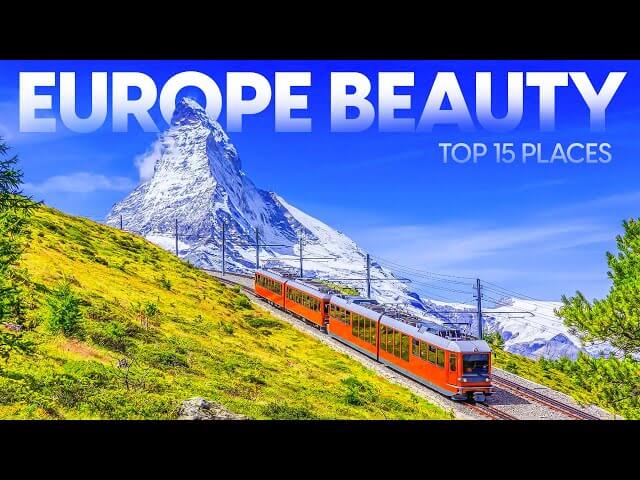Majestic mountains, vibrant culture, and spiritual sanctity – isn’t this what comes to mind when you think of Nepal? However, one cannot help but wonder about the safety aspect amidst all its enchanting allure. As the world continues to grapple with issues ranging from political unrests to pandemics, it’s only natural to question: Is it safe to visit Nepal right now?
Table of Contents
This article will not only address your concerns about safety in the Himalayan paradise but also take you on an exciting virtual tour through 10 most popular tourist places in Nepal. So buckle up as we embark on a journey where lofty peaks kiss azure heavens and ancient temples whisper tales of time!
Understanding Nepal and Its Tourism Potential
Nestled between the mighty peaks of the Himalayas, Nepal is a land that effortlessly blends natural allure with rich cultural heritage. Most tourists are entranced by Nepal’s versatility – from treacherous yet exhilarating treks in Annapurna and Everest to the tranquil ambiance of ornate Buddhist monasteries; fascinating wildlife experiences in Chitwan and Bardia National Parks to a diverse medley of Hindu temples dotting its cities.
Yet, there is so much more to this beautiful country than its popular touristic credentials. Imagine exploring quaint Newari villages frozen in time or embarking on offbeat trails leading you to serene glacial lakes. With opportunities for white river rafting, bungee jumping, paragliding or simply breathing in fresh mountain air amid astounding landscapes – it’s clear that Nepal’s tourism potential remains vastly untapped. This captivating destination serves as a potent reminder that adventure and tranquility truly can coexist.
Safety Concerns: Is Nepal Safe for Tourists?
Touring the enchanting terrains of Nepal, you might wonder about the safety of this South Asian gem. Safety, after all, should never be compromised when one ventures into a foreign land. Amidst mystical mountains and timeless temples, it may uplift your spirit to know that Nepal is considered one of the safest countries for tourists worldwide. Crime rates are generally low and instances involving tourists are rare, demonstrating how seriously Nepal takes its responsibility as a global tourist hub.
However, safety in travel isn’t purely limited to crime statistics. Tourists also frequently raise concerns about hiking or trekking safety due to the challenging geography of Nepal’s mountainous terrain. Saying that, reliable tour operators in Nepal prioritize your security by ensuring adequately equipped trek trails and employing experienced guides who can handle emergencies efficiently.
Do not hold back from experiencing an exhilarating journey through some of the world’s highest peaks because worry keeps you grounded; just make sure you engage with credible local resources for smooth navigation through this Himalayan wonderland!
Overview of the 10 Most Visited Places In Nepal
If you’re longing for a close encounter with nature, Nepal is a must-visit destination at least once in your lifetime. Upon your visit, there are numerous stunning locations in Nepal that should be on your itinerary.
1. Pashupati Nath Temple
Set in the heart of Kathmandu, the Pashupati Nath Temple is more than just a towering architectural wonder—it’s a spiritual sanctuary that will captivate your senses and awaken your spirituality. Amazingly, it houses one of the most important Hindu Deities – Lord Shiva and dates back to 400 BC.
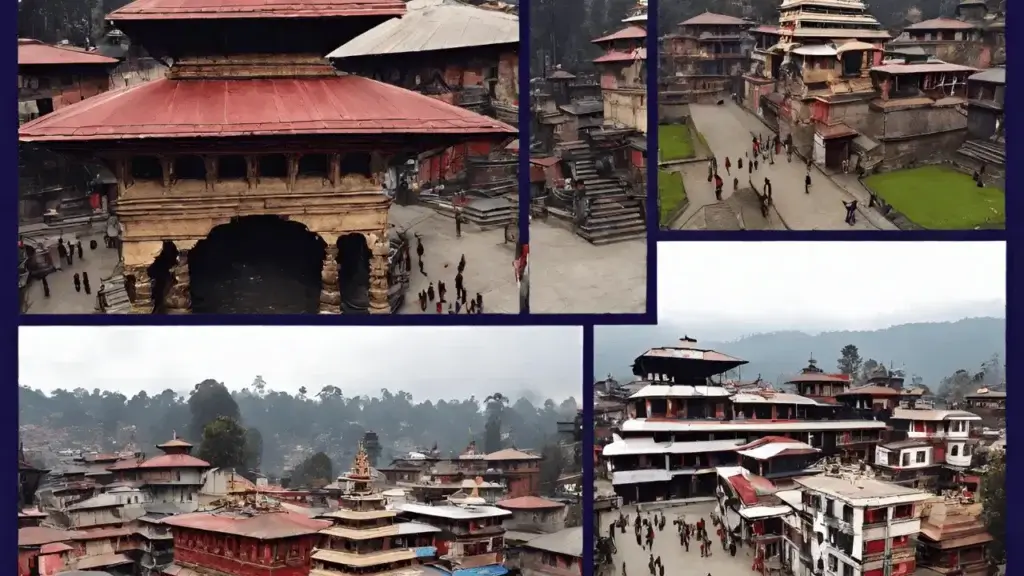
As you make your way through this UNESCO World Heritage Site, you will appreciate not only its religious importance but also marvel at its intricate craftsmanship; each nook is adorned with aesthetically pleasing details that reflect Nepal’s rich culture.
Every detail here tells an eloquent tale. The smell of incense wafting through the air strikes you first before you are engaged by the serene sound of temple bells ringing in harmony as devoted pilgrims offer their solemn prayers. An encounter with this mystical place often results in visitors experiencing what locals refer to as ‘Shanti,’ a sense of peace manifested from deep within, making it much more than just another stop on your tourist itinerary.
2. Boudanath
Located amidst the beautiful cityscape of Kathmandu, the grandeur presence of Boudanath cannot be overlooked. This UNESCO World Heritage Site is one of the largest spherical stupas in Nepal, casting a mesmerizing aura that attracts hordes of both tourists and devout Buddhists.
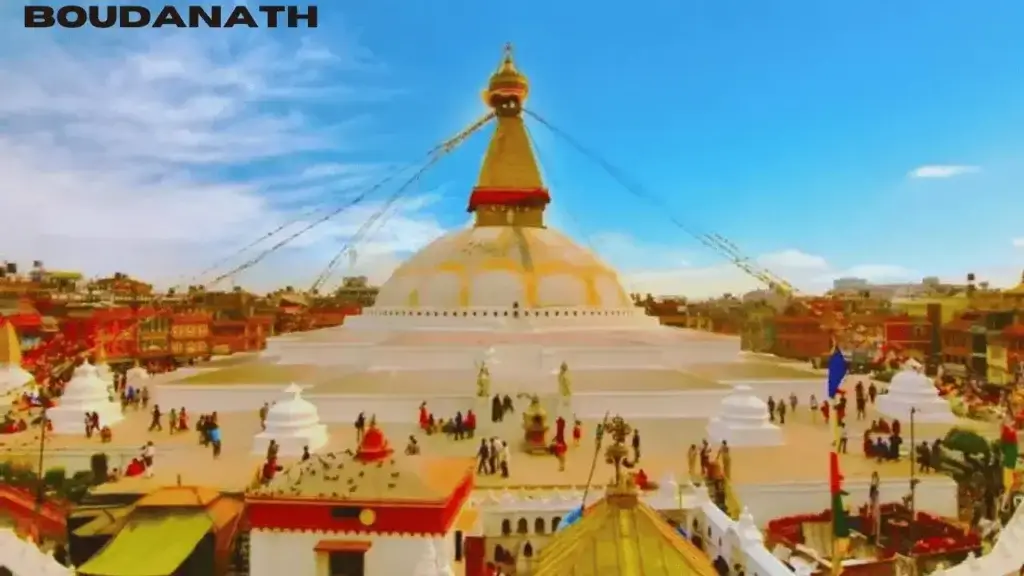
The magic components are its massive mandala, a terraced tower with painted Buddhas nested at every stage which than spirals higher into the aloft sky with piercing eyes reflecting wisdom and compassion.
Around it, wall paintings enrich its beauty while prayer wheel rotations infuse peace amid bustling shops and vibrant eateries around the stupa. This place vibrates energetically to a blend of chants and hymns giving your soul an unparalleled tranquillity; so let your spirit intermingle with this sacred ambience at Boudanath when in Nepal.
3. Nagarkot
Nestled in the hills about 32 kilometers east of Kathmandu is Nagarkot, a quintessential tourist stop that offers some of the most striking panoramas of the Himalayas. Here, the world feels like it’s tucked inside a snow globe as you overlook the majestic peaks that tower over Nepal’s dense and lush terraced fields. Whether gazing at twilight hues that paint Mount Everest in blush tones or admiring star-studded mirrors made by reflection pools at night, Nagarkot is truly a haven for landscape lovers.
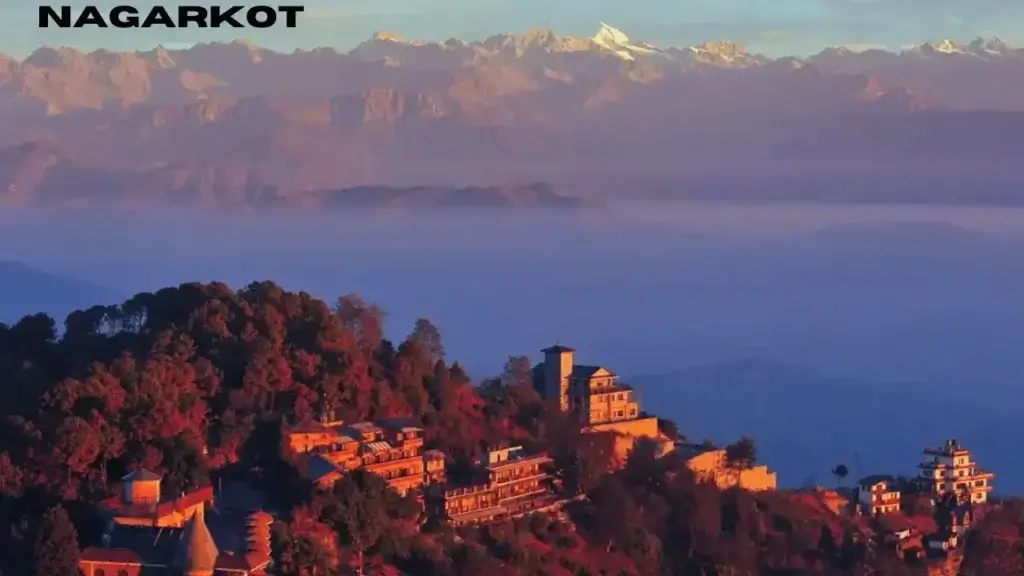
Nagarkot isn’t just famed for its visual spectacle; it’s also an excellent destination for hiking enthusiasts. Journey through shady forests flourishing with rhododendrons on a hike to Dhulikhel, another great vantage point. The unexpected chirping of birds and rustling leaves fill your ears as you trek through pristine natural surroundings.
Exploring this hidden gem will make you marvel at nature’s wonders while providing assurance about safety in Nepal due to its welcoming locals and maintained trails.
4. Pokhara Valley
Against the backdrop of the majestic Annapurna range, Pokhara Valley casts a spellbinding elegance that enchants every visitor. Venturing into this tranquil marvel in Nepal’s heart is like stepping into a painting filled with vibrant hues from mystical lakes, verdant landscapes to cascading waterfalls.
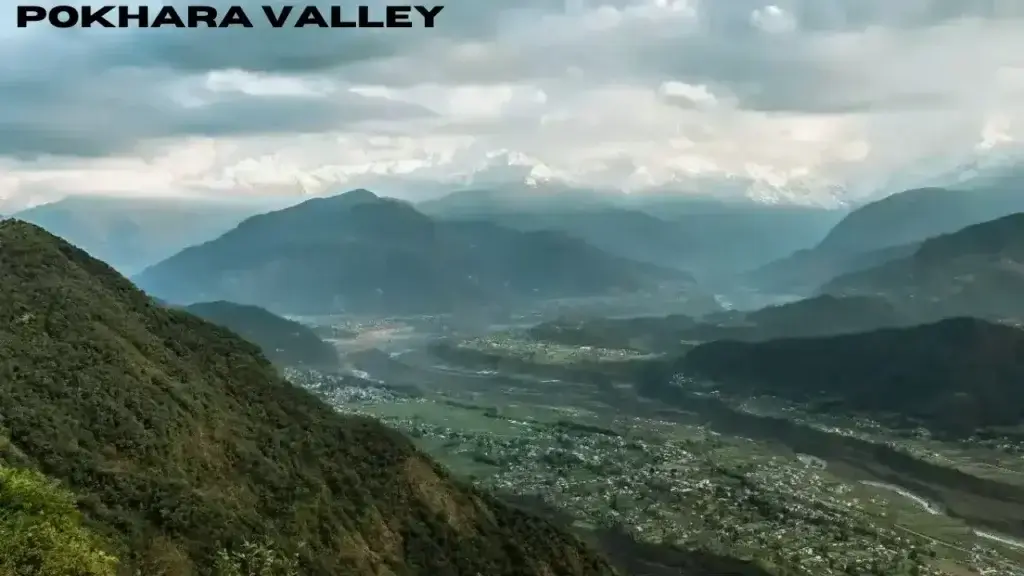
The city’s charm lies not just in its natural beauty but also in its rich cultural and spiritual legacy. Explore the sacred Tal Barahi Temple nestled on an island in Phewa Lake or delve deeper into serenity at the World Peace Pagoda. Venture further and lose yourself amidst nature’s canvas at Devi’s Fall or relish the dappled beauty of sunrise at Sarangkot hilltop.
Be it adrenaline-filled paragliding over sparkling lakes or peaceful yoga retreats nestled in serene mountain valleys, Pokhara offers an alluring contrast that captivates adventurers and peace-seekers alike. Experience the magic of Pokhara — an undeniable jewel among Nepal’s diverse treasures.
5. Mahendra Gufa
Nestled in the charming city of Pokhara, Mahendra Gufa has beckoned cave explorers and adventurous souls for years. The intricate networks of tunnels and chambers are natural wonders, but tread with care as it’s not just thrilling landscape features that inhabit this underground labyrinth — the darkness also plays host to a variety of awe-inspiring bat species! This limestone grotto opens up into a complex maze instilled with an air of mystic ambiance; it isn’t merely a cave, but rather a doorway back in geological time.
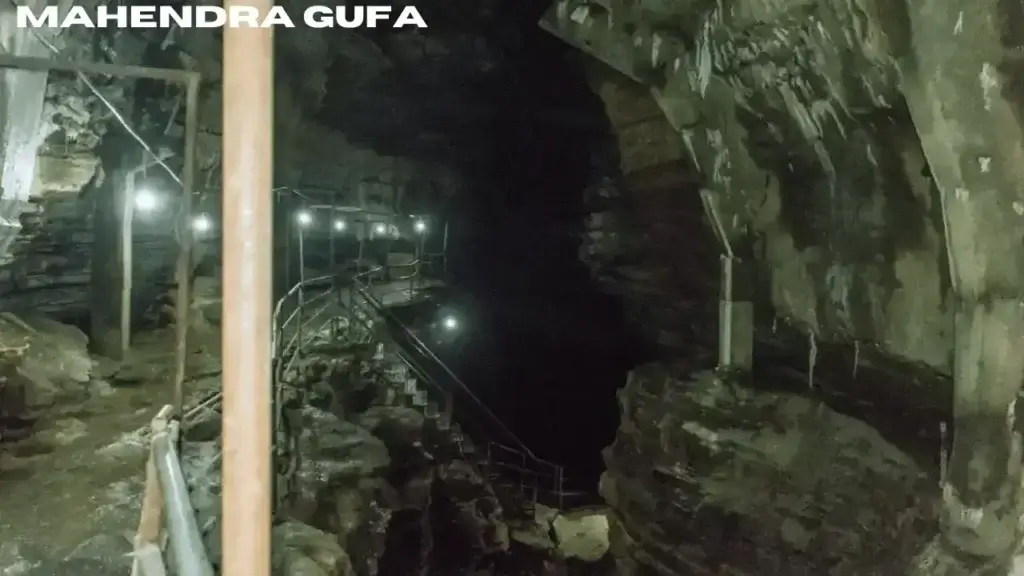
A trip through Mahendra Gufa is no less than delving into Mother Earth’s sculpting prowess – stalactites hang from the ceilings like intricate chandeliers while stalagmites rise from the ground as if reaching out for their upside-down twins.
Armed with flashlights and curiosity, each step takes you deeper into this subterranean spectacle formed over millions of years. Your voice will get lost in the echoes as you marvel at these timeless formations – making it easy to forget about everyday life above ground!
6. Lumbini
Steeped in profound spirituality and historical significance, Lumbini beams as an oasis of peace and enlightenment. As the birthplace of Gautama Buddha, this UNESCO World Heritage Site invites visitors to embark on a transcendent journey through its sacred temples, ancient ruins, and meditative gardens.
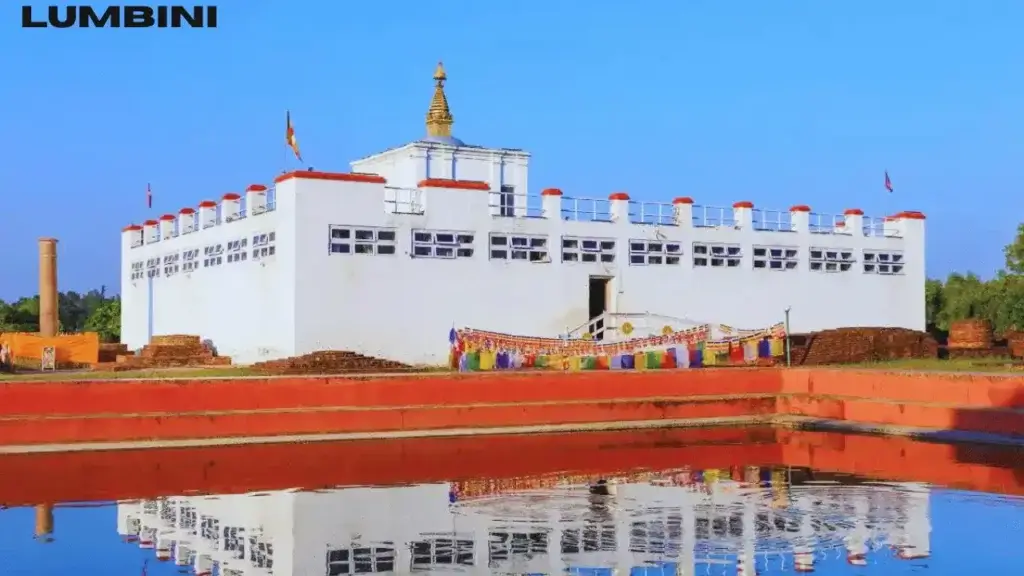
Enter Maya Devi Temple – the heart of Lumbini- housing an inscription wall that signifies it as Buddha’s birthplace; it further solidifies the connection between devotees and this blessed land.
Lumbini doesn’t confine itself merely to being a religious pilgrimage site but extends beyond into a harmonious blend of culture and nature. Its vast sacred garden – divided into eastern monastic zone for Theravada monasteries, western for Mahayana; gives testament to Buddhism’s diverse traditions from around the globe.
Read Also: Unveiling the Magic of Summer in Spain
Here you’ll be captivated by vibrant prayer flags rustling in calming melodies against serene spiritual backdrop under indigo skies cribbed with starlight – a compelling insight into Nepal’s enchanting disposition not simply safe but fostering personal transcendence.
7: Swayambhu Mandir
Swayambhu Mandir, colloquially known as the Monkey Temple, is an ecstasy of vibrant cultures and spiritual vibrations. It’s not just a place; it’s an experience. Perched atop hills with serene bird-views of Kathmandu, this Buddhist temple entwines history, architecture, and spirituality immaculately. A steep ascent to the shrine may be formidable but every step reveals stellar panoramas that appease your fatigue.
The Mandir boasts not only Buddhist prayer wheels and countless Buddha statues but also hosts playful monkeys adding unique charm and organic humor to your visit!
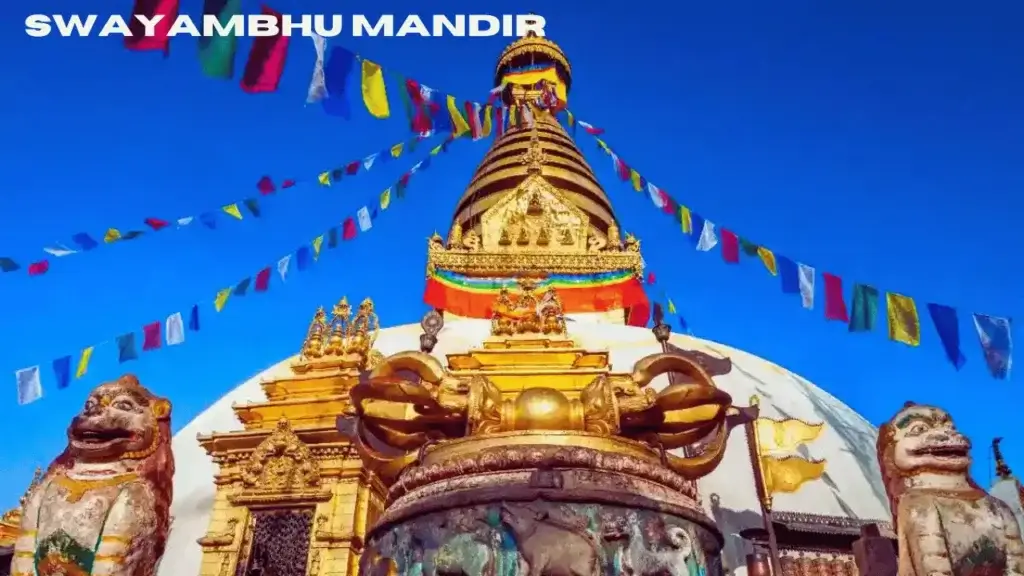
The sense of tranquility amidst humming chants amplifying in the evening breeze is utterly profound – from monks in maroon robes deep in prayers to candlelight flickerings reflecting on ancient artistry; you are into an otherworldly domain worth every moment spent here. Safety?
Absolutely! Just reserve little caution for our monkey friends often found overzealous for tourists’ belongings.
8: Thamel Area
Unlocking the heart of tourism in Kathmandu, the Thamel Area is an electrifying maze of vibrant colors, a symphony of sounds, and an absolute feast for all your senses. Known as a miniature Nepalese universe pulsating with life round-the-clock, this place opens you up to its plethora of craft shops, bookstores selling books on Nepal’s culture and heritage; art galleries showcasing unique local arts and antiques; vendors peddling trinkets and spices; eclectic mix of bars and restaurants serving global cuisine alongside traditional Nepalese fare like momo and dal bhat.
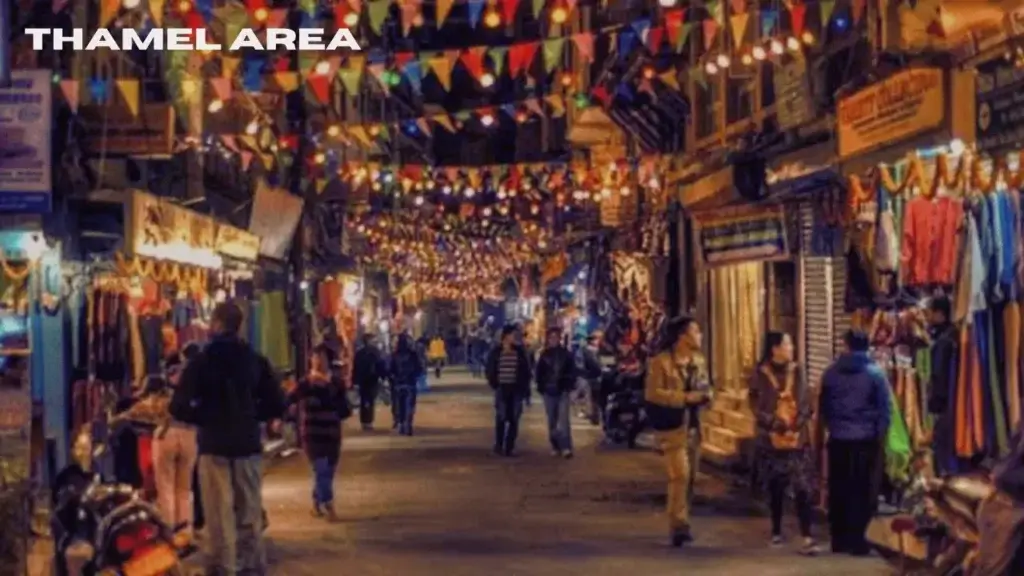
For adventure lovers planning to traverse the treacherous trails leading up the majestic Himalayas – Thamel serves as a hub supplying affordable trekking gear. As night falls over this colorful tableau, savor live musical performances or lose yourself in exotic belly dances at various clubs! Interestingly though bustling with tourist activities by day & night alike – Thamel embodies Nepal’s safety aspect: locals are welcoming & protective making everyone feel secure whilst enjoying its myriad offerings
9: Bhaktapur
Bhaktapur, also known as the ‘City of Devotees’, promises an unparalleled experience to its visitors. Stepping into Bhaktapur feels like being transported back in time with its preserved ancient cityscape, bustling pottery squares, and rich cultural festivals. Known for artisan craftsmanship, this UNESCO World Heritage site is a living museum with temples and courtyards dating back to the 12th century.
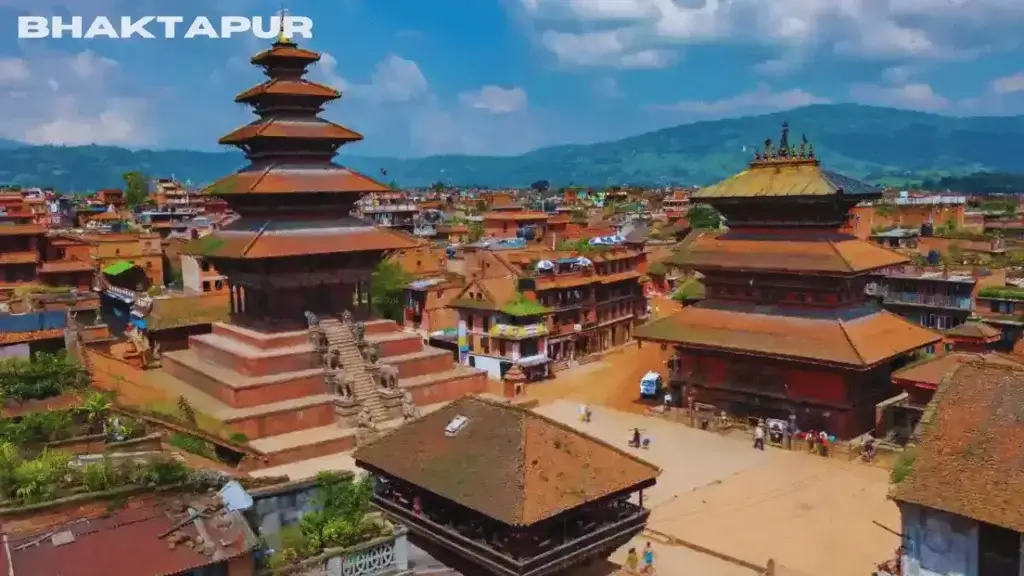
Despite modernization creeping at its edges, Bhaktapur remains one of Nepal’s safest towns. An absolute delight for history buffs, connoisseurs of art and culture enamour this breathtaking gem yearly. A rare encounter indeed – walking into stories sketched in meticulously handcrafted woodwork while relishing traditional Newari cuisine on earthy terracotta dishes!
10: Chitwan National Park
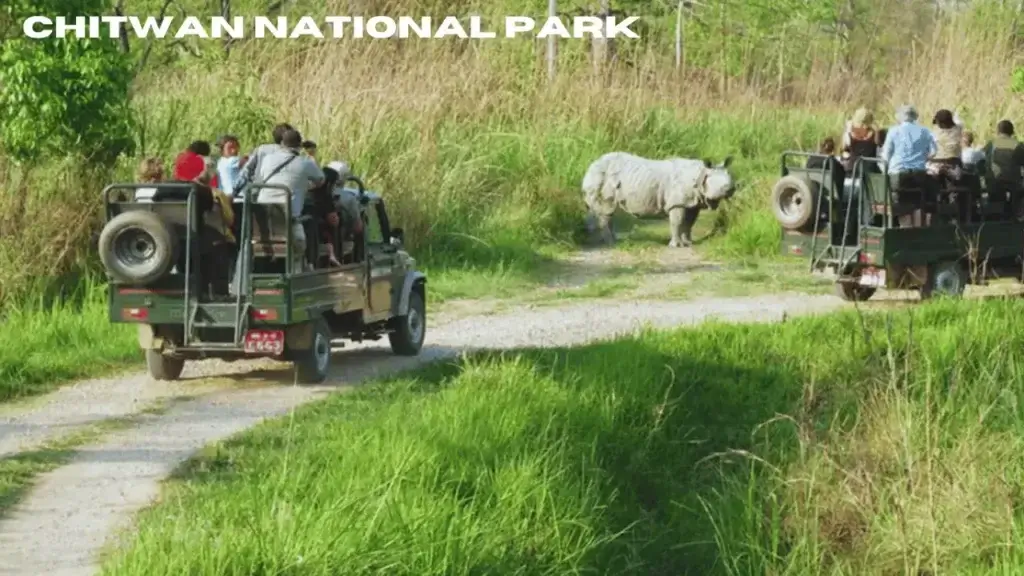
Despite its wild charm, safety is prioritized in Chitwan National Park with trained guides and tailored tour packages that cater to visitors of all age groups. While roaming through thickets under canopies of towering trees or boating gently down Rapti River might seem adventurous (and slightly intimidating), know that there’s always meticulous planning behind each thrilling journey ensuring your peace of mind amidst wilderness adventures! So yes – even in the heartland of Nepal’s fauna-rich forests, safety reigns supreme.
Health and Travel Insurance in Nepal
As you prepare to ascend the glorious peaks of Nepal or immerse yourself in its rich cultural tapestry, overlooking travel and health insurance might seem like a drop on a hot stone. Yet, this is crucial and not to be brushed off carelessly. After all, amid the breathtaking landscapes and heart-warming hospitality in this Himalayan paradise, potential dangers lurk that can abruptly disrupt your escapade.
Healthcare facilities outside main cities in Nepal can be somewhat lacking with high-altitude sickness being common among trekkers. Having comprehensive health insurance ensures that you receive top-tier medical care when needed without astronomical costs becoming an unpleasant surprise souvenir.
Similarly, given the unpredictable weather patterns which may lead to flight delays or cancellations – especially notable if Everest is on your itinerary – robust travel insurance becomes invaluable. In essence, these insurances fortify your safety net when exploring Nepal’s wonders so that minor hiccups do not escalate into significant hurdles.
Local Custom, Culture and Tips for Visitors
Delving into Nepal’s vibrant local customs becomes an unforgettable part of a visitor’s journey. The blend of Hindu and Buddhist traditions means you’re likely to stumble across lively festivities celebrated with elaborate rituals, soulful chants, colorful processions, and often free-flowing local food and drinks worthy of Instagram snaps.
A singular experience to be had is the unique Newari Feast – ‘Bhoj’, offering a relentless array of flavorsome dishes that epitomize community bonding.
However, it’s not just about feasting; respect towards tradition is deeply woven in the daily lives which one must politically acknowledge as visitors. From taking clockwise circuits around temples (as per Buddhist traditions) to refraining from touching artefacts or people with feet (considered disrespectful), respectful observation is appreciated by locals.
In addition to this, modest clothing should be adopted especially while visiting religious sites – women particularly are encouraged to wear attire that covers their shoulders and knees.
While tips aren’t customary in Nepal, trekking guides and porters rely on them for income. Providing a 10% tip at restaurants where service charge isn’t included would earn warm appreciation as well from local owners! Filled with diversity yet held together by unity, embracing these aforementioned nuances can make your stay in Nepal far more enriching!
FAQ’s About Popular Tourist Places In Nepal
What are the most popular tourist places in Nepal?
The most popular tourist places in Nepal include Kathmandu, Pokhara, Chitwan National Park, Lumbini, and Everest Base Camp.
Is it safe to travel to Nepal for tourism purposes?
Yes, it’s generally safe to travel to Nepal. However, like any destination, you should take regular safety precautions and stay updated with travel advisories.
Do I need a visa to visit Nepal as a tourist?
Most nationalities do require a visa to enter Nepal. Tourist visas can be obtained upon arrival at Tribhuvan International Airport or at designated land borders.
What is the best time to visit Nepal?
The best time to visit Nepal is during the post-monsoon period from October through December when the skies are clear, providing stunning views of the mountains.
Are there any specific health issues I should be aware of before traveling to Nepal?
Travelers should ensure they’re up-to-date on routine vaccines before visiting Nepal. Specific vaccines like Hepatitis A & Typhoid are also recommended due to contaminated food/water risk.
What languages are spoken in Nepal? Will language be an issue for tourists?
While Nepali is the official language of Nepal, English is widely understood and spoken especially in major cities and tourist areas.
Is trekking in the Himalayas safe for all ages and fitness levels?
Trekking in the Himalayas can be physically demanding and may not be suitable for everyone. It’s advisable for trekkers to have an appropriate level of physical fitness and consult with their doctor prior making plans.
What type of currency is accepted in Nepal? Can I use my credit card?
The official currency of Nepal is the Nepalese Rupee. Major credit cards are accepted in hotels, restaurants and shops in cities, but it’s good to carry cash for remote areas.
Conclusion: Final Thoughts on Visiting Nepal
In conclusion, Nepal is an embodiment of both cultural depth and ethereal beauty that should be on every traveler’s checklist. Besides the occasional safety wavers, which are a part of any travel experience, it promises a plethora of experiences in the lap of the Himalayas that you will treasure for a lifetime.
Your concerns about safety in Nepal are valid and essential but remember this: adventure often graces those who dare to step out into the unknown. From mystical monasteries echoing with chants to thrilling Everest treks, bustling city chaos to tranquil lake views – Nepal offers more than just pictures for your social media but memories imprinted onto your soul forever!
So pack up your worries alongside your bags and get ready for an odyssey like no other in the land that seamlessly stitches nature and culture together into a breathtaking panorama!
